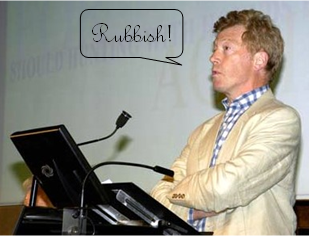My Brain Made Me Do It
As a college student deep into my studies, I have developed a dependency on a warm, slightly sweetened morning cup of coffee. I begin each day (or sometimes each afternoon) with a mug full of the deep brown nectar, with its bold, slow roasted flavor. I suppose I could quit any time I want, right? You know, I could put the cup down and be the same. Maybe I would have a harder time getting started in the morning or be less productive at work. It might be a little more challenging to stay awake on my drive to campus. Maybe I’ll go to bed a little earlier and put off my assignments for another day. On second thought, maybe I’ll stick to my coffee. I don’t think I could do much without it. Original Image from Americannonfiction.com With the knowledge that I am far from being the only one with this compulsion, I want to open the discussion on addiction and responsibility. Getting started on ‘something,’ such as drugs, gambling--some are now suggesting even the Internet--is generally consider



